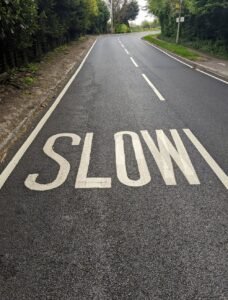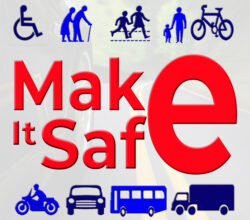Safer Road Users: Promoting Responsible Behaviour
 MAkeItSafe emphasizes the importance of responsible behaviour on the roads and provides valuable information on how individuals can contribute to creating a safer road environment for all. Whether you are a driver, pedestrian, cyclist, or motorcyclist, we believe that adopting safe practices and following traffic rules is essential to prevent collisions and ensure the well-being of everyone on the road.
MAkeItSafe emphasizes the importance of responsible behaviour on the roads and provides valuable information on how individuals can contribute to creating a safer road environment for all. Whether you are a driver, pedestrian, cyclist, or motorcyclist, we believe that adopting safe practices and following traffic rules is essential to prevent collisions and ensure the well-being of everyone on the road.
Why Safer Road Users Matter:
Safer road users are essential for maintaining a harmonious and secure road environment. Each individual has the power to make a positive impact by being mindful of their actions and respecting the rights of others. When all road users prioritize safety, it significantly reduces the risk of accidents, injuries, and fatalities, leading to improved transportation experiences and healthier communities.
Key Principles for Safer Road Users:
-
Knowledge and Awareness: Understanding and adhering to traffic laws and regulations is fundamental to being a safe road user. Whether you are a driver, pedestrian, cyclist, or motorcyclist, it is crucial to be aware of the rules of the road, including speed limits, traffic signs, and right-of-way principles. Stay informed about updates and changes to road regulations and actively seek knowledge through educational programs and resources.
-
Responsible Driving Practices: Drivers play a significant role in road safety. By practising responsible driving habits, such as obeying speed limits, maintaining a safe following distance, and using turn signals appropriately, you can reduce the risk of accidents. Avoid distractions while driving, such as texting or using mobile devices, as they significantly impair your ability to react to potential hazards.
-
Respecting Vulnerable Road Users: As road users, it is crucial to respect and protect vulnerable groups such as pedestrians, cyclists, and motorcyclists. Always yield to pedestrians at crosswalks, maintain a safe distance when overtaking cyclists, and be attentive to motorcyclists sharing the road. Providing ample space and understanding their unique needs helps create a safer and more inclusive road environment.
-
Using Protective Equipment: For vulnerable road users, using proper protective equipment is essential. Cyclists and motorcyclists should wear helmets that meet safety standards to protect against head injuries. Reflective clothing and lights should be used during low-light conditions to enhance visibility and reduce the risk of accidents. Additionally, drivers should always wear seatbelts, and passengers should also be properly restrained.
-
Communication and Signaling: Effective communication between road users is crucial for anticipating and responding to potential hazards. Use turn signals to indicate your intentions when changing lanes or making turns. Maintain eye contact with pedestrians and cyclists to ensure they are aware of your presence. Clear and consistent communication promotes understanding and reduces the likelihood of collisions.
-
Pedestrian Safety: Pedestrians should always use designated crosswalks when available and wait for the appropriate signal before crossing the road. Avoid distractions such as using smartphones or listening to loud music, as they may impair your ability to perceive and react to oncoming traffic. Make yourself visible to drivers, especially during nighttime, by wearing bright clothing and using reflective accessories.
-
Cyclist and Motorcyclist Safety: Cyclists and motorcyclists should ride defensively and follow traffic rules. Always wear protective gear, including helmets and reflective clothing, and use proper hand signals to indicate your intentions. Be aware of blind spots and position yourself safely on the road. Regular maintenance of your bicycle or motorcycle is also important to ensure it functions properly.
-
Continual Learning and Improvement: Road safety is an ongoing process of learning and improvement. Stay updated on road safety initiatives, attend defensive driving courses, and seek opportunities to enhance your knowledge and skills as a road user. By continuously striving for improvement, you can set an example for others and contribute to a safer road environment.
Remember, each road user has the power to influence safety. By adopting responsible behaviour, respecting others, and adhering to traffic rules, we can collectively create a culture of safety on our roads. Let’s work together to make our communities safer for everyone.
For additional resources, tips, and educational materials on being a safer road user, please explore the links and information provided on this webpage.
![]()
